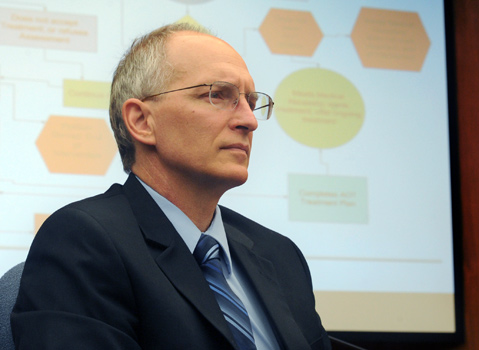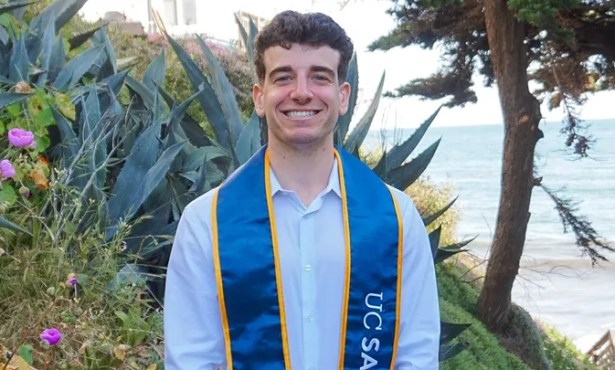Laura’s Law: Treatment to Trump Tragedy?
County Considers Adopting State Legislation in Wake of Murder Cases

When Santa Barbara County officials looked at adopting a state law in 2003 and 2010 that would allow court-ordered outpatient treatment for severely mentally ill people, the talks hit logistical and financial roadblocks. But now buoyed by a rebounding Department of Alcohol, Drug and Mental Health Services (ADMHS) and spurred by a community asking what could have prevented the murders of six UCSB students in May and a Goleta family in August, the Board of Supervisors voted unanimously this week to put the wheels in motion for Laura’s Law.
Over the next six months, multiple county offices (most notably those of Sheriff, the District Attorney, the Public Defender, and County Counsel) will work with ADMHS leadership to suss out how many people the law could help and at what cost, with an actual vote on implementation coming when those questions become answers. Although they acknowledged concerns about the law’s possible encroachment on their loved ones’ civil liberties, many parents of adult children with mental illness shared stories of their struggles on Tuesday and applauded the board’s vote.
Along with District Attorney Joyce Dudley, Supervisor Doreen Farr — whose district was rocked by the UCSB rampage — championed the discussion. After sharing an anecdote about a mother whose son was “a different person” on medication and before hearing from two other moms — one whose schizophrenic son broke all the windows and mirrors in the house after refusing to take his meds, another whose son died after running away out of fear he’d be placed under a permanent conservatorship — Farr said she heard too many such stories in her time in office. “These heartbreaking situations are going on all around us in this county,” she said.
Laura’s Law, passed by state lawmakers in 2002, followed the 2001 killing of Laura Wilcox by a man with untreated schizophrenia. Nevada County, where Wilcox was shot, became the first California jurisdiction to adopt the program, paving the way for the counties of Orange, San Francisco, Yolo, Los Angeles, and — just last week — Placer, which neighbors Nevada County, to adopt it, too.
If Santa Barbara signs on, potential patients will have to meet nine criteria to receive voluntary or mandatory treatment. They must be at least 18 years old and have a severe mental illness to the extent that they would be “unlikely to survive safely in the community.” They must have been hospitalized or incarcerated twice in the past three years or have committed violence (or threatened it) against themselves or others once in the past two years. Further, they must have demonstrated a previous unwillingness to accept psychiatric treatment and a present risk of having their condition worsen. They will have to benefit from the treatment under the law — to the extent that it would prevent a 72-hour psychiatric hold — and be treated in the “least restrictive” manner.
Family members, roommates, police, and mental-health professionals could request that a person be helped under the law, with ADMHS staff taking the reins from there. If patients meet all nine criteria, they would be offered help; they could either voluntarily accept that treatment or be ordered to. Housing could prove the highest hurdle, with many at the hearing noting the perpetually maxed-out 16-bed Psychiatric Health Facility.
While ADMHS officials said figures specific to Santa Barbara County don’t yet exist, to run the program in Placer County, the population of which is about 75,000 fewer, will cost about $400,000 a year for 20 patients, paid for entirely by state and federal monies, according to the Sacramento Bee.
Touted in making the case for Laura’s Law, ADMHS has benefited in recent months from millions in state grants, infusions related to the Affordable Care Act, and budget adjustments for this fiscal year — all coupled with boosted outreach programs. Whatever the source, the funding for Laura’s Law couldn’t detract from funding for existing countywide mental-health services.
Whether Laura’s Law could have stopped Elliot Rodger or Nicolas Holzer from claiming the lives of 10 people will never be known, officials alluded to Tuesday. But, said Dudley, having it in place in the future could help. “In and of itself,” she said, “the impact may be small but extremely significant.”



